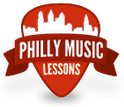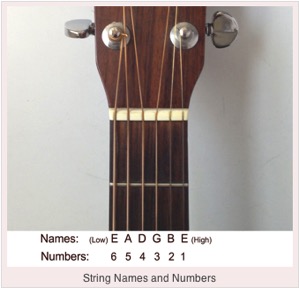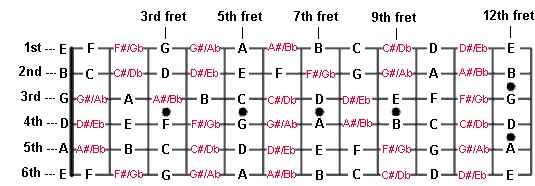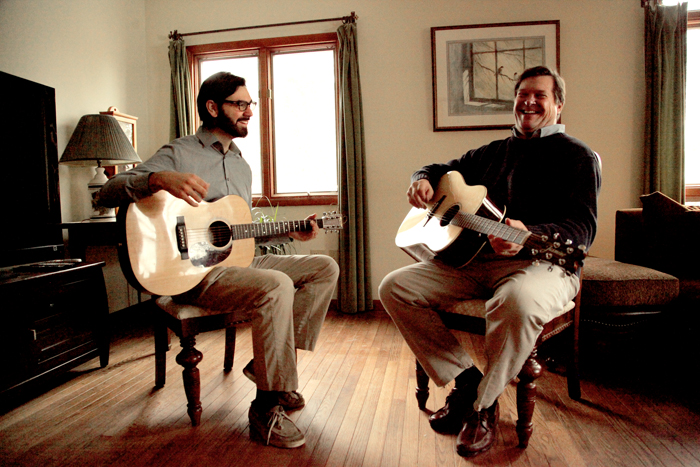
Knowing the Notes on the Guitar

Learning to read standard notation is something many guitarists will never do. And while there are definite benefits to learning how to read notes, unless you’re playing Jazz or Classical, it’s not necessary to become an accomplished guitar player. However, knowing how to figure out what note you’re playing on the guitar is absolutely necessary if you want to go beyond strumming the standard open chords.
Knowing what note you’re playing on the guitar will help you to determine what scales and chords you’re playing up and down the neck. Each scale and chord has a root note that they are built from. The root note is the letter name which appears at the beginning of the scale or chord symbol (A major scale or C7 chord).
While it’s easy to memorize what chord or scale you’re playing when there are only a few in open position, when you start moving these shapes around the guitar, it becomes imperative to know your root notes and letter names.
The good news is that this is extremely easy as long as you know three things:
1) the names of the strings on the guitar
2) the difference between whole steps and half steps
3) the pattern of the musical alphabet
The names of the strings on the guitar
As you can see, the two outside strings are both E notes, called Low E (the thickest string) and High E (the thinnest string). From Low to High the note names of the guitar strings are E, A, D, G, B, E. The strings are numbered 1-6 from highest to lowest, however, most people will order them from lowest to highest.
Here’s a little pneumonic device for remembering the string names from lowest to highest:
(6)Every (5)Apple (4)Does (3)Go (2)Bad (1)Eventually
What are whole steps and half steps?
On the guitar, the notes are determined by what fret you’re holding when you pick the string, unlike the piano where each note is represented by pressing a different key.
A half step is the shortest distance you can go, so on the guitar it is the distance between one fret and the next fret up or down. If you’re playing the 3rd fret – low E string, a half step up would be the 4th fret and a half step down would be the 2nd fret on the same string.
Keep in mind that the distance between an open string and the 1st fret is a half step.
A whole step is equivalent to the distance of two half steps. So if you’re playing that same note on the 3rd fret – low E string, a whole step up would be the 5th fret and a whole step down would be the 1st fret.
All scales have an order of whole steps and half steps which repeat over and over again. The musical alphabet also has an order of whole steps and half steps. Once you know that order, you’ll be able to figure out any note on the guitar.
So what is the musical alphabet?
The musical alphabet starts with A, just like the regular alphabet. However, it only goes up to G. After G it simply goes back to A and repeats again. So it includes letters A, B, C, D, E, F, and G. There is no H note. If you already know your standard open chords, you’ll already recognize a lot of these letter names from those chords.
There is either a whole step (2 frets) or a half step (1 fret) between each of these notes of the musical alphabet. The easiest way to remember the order is that there are whole steps between all the letters with the exception of half steps between B and C and between E and F.
Here are the distances between all the notes in the musical alphabet shown below on a guitar fretboard in relationship to a piano keyboard (the keyboard had to be distorted a bit to line up with the fretboard):
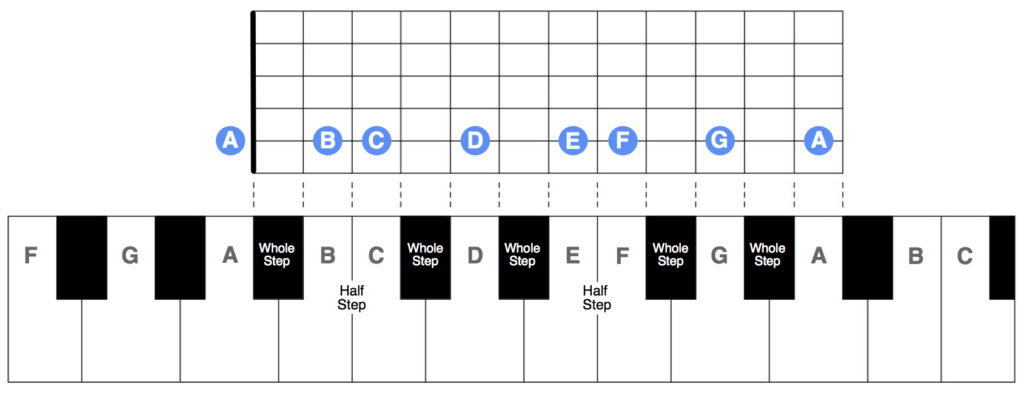
So what are the notes in between the whole steps?
Ah yes. You may have noticed that we’re skipping some notes because there are whole steps between most of the letters in the musical alphabet. This is where flat and sharp notes come into the equation.
A flat note is represented by a lower case b, as seen in the chord Bb Major or Ab minor. A sharp is represented by the number sign or hashtag symbol #, as seen in the chords G# major or C# minor.
When you flat a note, you bring it down a half step from whatever letter name you’re on. So if you’re playing a G note (3rd fret – low E string), you would play the 2nd fret for a Gb. A sharp note is just the opposite, go up one fret. So to play a G# on the low E string, you would play the 4th fret.
Now when we play the 4th fret G#, it could also be called an Ab because it is one fret above a G and one fret below an A. These are called enharmonic notes. They are notes which can be labeled as a flat or a sharp. Usually this is dependent upon what key you’re in, but we’ll get to that in another article!
Figuring Out What Note You’re Playing
So to figure out what note you’re playing on any string, simply start with the open note that you know because you have your string names memorized! Then work your way up the musical alphabet until you get to the note that you’re playing.
Examples:
- If I want to figure out what note I’m playing on the 5th fret, low E string I would start with my low open E, then go up a half step to the 1st fret (because there is a half step between E and F). Now I’m on an F note on the 1st fret, go up a whole step to the 3rd fret. Now I’m on G. Go up one more whole step to the 5th fret. Now I’m on A because the musical alphabet always repeats after G. So the 5th fret, low E string is an A note.
- If I want to figure out what note is on the 4th fret D string, I can do the same process. Start with my open D string, then go up a whole step to the 2nd fret (because there is a whole step between D and E). Now I’m on an E note. Then go up a half step to my next letter F on the 3rd fret (because there is always a half step between E and F). If we wanted to go up to the next letter we’d have to go up another whole step to get to G. However, we’re only going up to the 4th fret so we’ve hit a sharp/flat note. The 4th fret – D string can either be called an F# or a Gb depending on what key you’re in.
You can do these exercises all day long to practice finding and naming notes on all the strings of the guitar. Just kidding, maybe just 5 minutes a day? As you know, regular practice goes a long way!
Below is a diagram of all the notes on the guitar so you can check your work. Good luck naming those notes!
Joseph Primavera
I teach Guitar, Bass, Piano and Ukulele. I am a music educator, performer, composer and producer with over 15 years of experience. Since obtaining my Bachelor’s of Music in Performance from Temple University in 2007, I have been teaching private music lessons in the greater Philadelphia area to students of all ages and skill levels. My teaching style focuses equally on technique, theory and improvisation. I like to tailor the lessons to each individual student's goals and interests, all while focusing on the music that they find interesting and inspiring. In 2002, I was one of only two guitar players in Pennsylvania chosen for the Pennsylvania Governor’s School for the Arts. In 2010, I recorded the music for a full length documentary called “Libertopia". In 2011, I co-lead the launch of a recording program at The Hill School in Pottstown, PA. Since graduating with my degree in jazz performance, I have been featured as a guitarist performing in a variety of genres, and have contributed guitar to multiple recordings, including works recorded at Miner Street Recordings in Fishtown. In addition to guitar and music in general, I have been teaching audio engineering, production and mixing. I have also had a key role in the production and engineering for the albums of many local bands, including Juston Stens (former drummer for Dr. Dog), TJ Kong and the Atomic Bomb, Grubby Little Hands, and The Looks of It (my personal project). In 2009 I founded Philly Music Lessons to bring a unique form of music education to my own neighborhood and to Philadelphia at large. Whether you are just starting out and want to learn some of your favorite songs or preparing for a college audition, I have the tools and experience to help you achieve your musical aspirations. Schedule a Lesson
